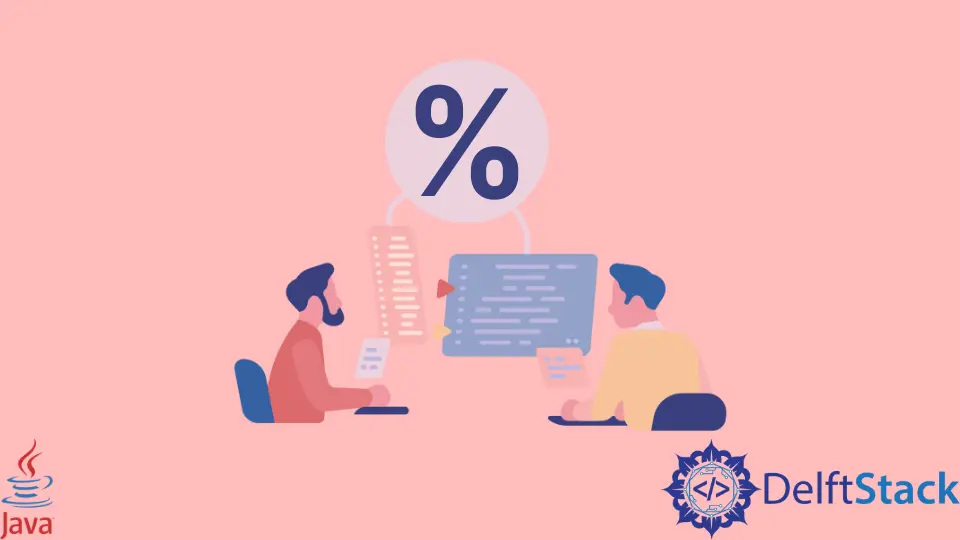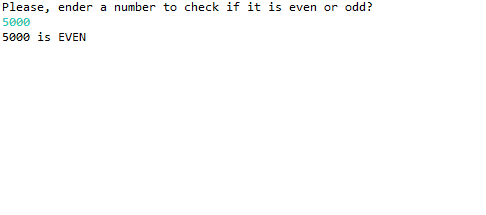Remainder Operator in Java
- Compute Remainder of Integer Division Using the Remainder Operator in Java
- Get String Length Using Reminder Operator in Java
- Check Even/Odd Number Using Remainder Operator in Java

This article will introduce the remainder operator in Java and its uses.
Compute Remainder of Integer Division Using the Remainder Operator in Java
In Java, modulo or the remainder operator is given by the symbol %. It calculates the remainder of a number divided by another.
Suppose, we have two values: value1 = 20, value 2 = 35. Here, value1 is the dividend and value2 is the divisor.
Example:
// load package
package JavaPercentagesymbol;
import java.util.Scanner;
// main class starts here
public class SymbolExample {
// main function
public static void main(String[] args) {
// value1/value2%remainder
int value1, value2, remainder;
value1 = 20;
value2 = 35;
System.out.println("value1=20; value2=35");
remainder = value1 % value2;
System.out.println("The remainder is: " + remainder);
}
// primary function ends here
}
// main class ends here
Output:
value1=20; value2=35
The remainder is: 20
Get String Length Using Reminder Operator in Java
In the following code block, the String[] username length is 4, and the size of the int length varies. However, the modulo operator correctly determines the actual length.
Since the length of the username is four, the remainder operator divides it with the length of the string instead of the length of a varying integer length.
Example:
package JavaPercentagesymbol;
public class SymbolExample {
public static void main(String[] args) {
String[] username = {"John", "Smith", "Martin", "Herry"};
int length;
length = 6 % username.length;
System.out.println("modulo 1: " + 6 % 4);
System.out.println(" 6 % 4 is " + length + ": " + username[length]);
length = 7 % username.length;
System.out.println("modulo 2: " + 30 % 4);
System.out.println(" 70 % 4 is " + length + ": " + username[length]);
length = 40 % username.length;
System.out.println("modulo 3: " + 40 % 4);
System.out.println("60 % 4 is " + length + ": " + username[length]);
length = 49 % username.length;
System.out.println("modulo 4: " + 49 % 4);
System.out.println("60 % 4 is " + length + ": " + username[length]);
}
}
Output:
modulo 1: 2
6 % 4 is 2: Martin
modulo 2: 2
70 % 4 is 3: Herry
modulo 3: 0
60 % 4 is 0: John
modulo 4: 1
60 % 4 is 1: Smith
The modulo % determined the actual length of String[]username out of the username.length array indexes.
But as you see, the length of the int length is 7, 40, and 49.
That is how the program intelligently returns the remainder of the username.length rather than giving us the rest of unordered int length values.
Check Even/Odd Number Using Remainder Operator in Java
The program below is an entry-level Java logic builder. It determines whether the given input in (integers) is even or odd.
Example:
package JavaPercentagesymbol;
import java.util.Scanner;
public class SymbolExample {
public static void main(String[] args) {
int value;
try (Scanner in = new Scanner(System.in)) {
System.out.println("Please, ender a number to check if it is even or odd?");
value = in.nextInt();
}
// determine the even value%2==0 will always be even
if ((value % 2) == 0) {
System.out.println(+value + " is EVEN ");
// else, it is definitely going to be odd
} else {
System.out.println(+value + " is ODD");
}
}
}
Output:

The Scanner generates a new Scanner object using the input stream passed as an argument in the code above.
And the nextInt() method takes a string of digits and changes it to an int data type. It gets the same passed argument from the Scanner.
Sarwan Soomro is a freelance software engineer and an expert technical writer who loves writing and coding. He has 5 years of web development and 3 years of professional writing experience, and an MSs in computer science. In addition, he has numerous professional qualifications in the cloud, database, desktop, and online technologies. And has developed multi-technology programming guides for beginners and published many tech articles.
LinkedIn